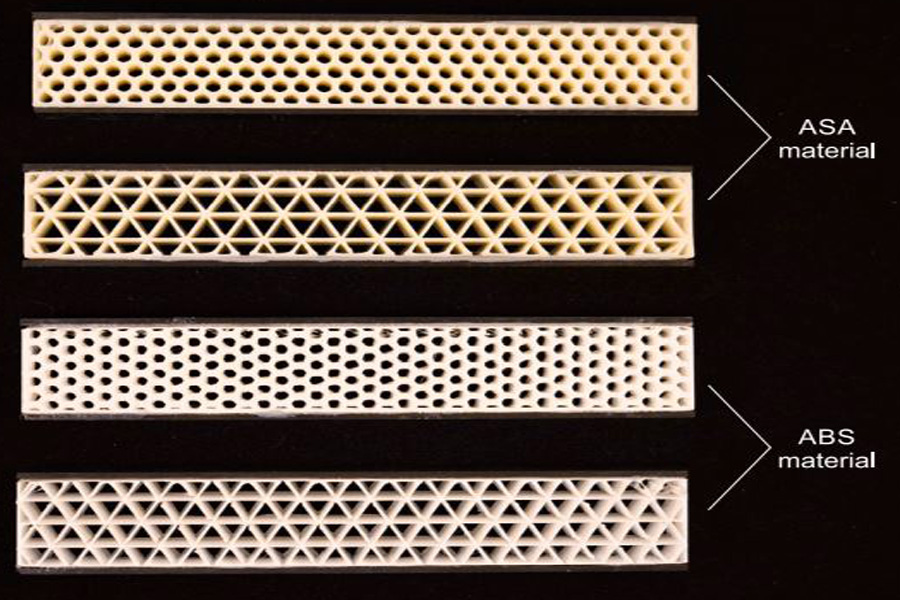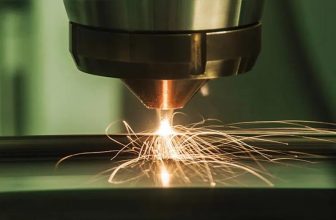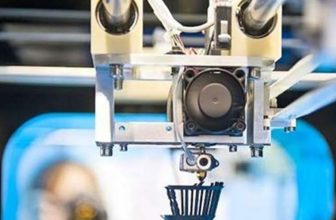
In the past few years, the development of composite materials for additive manufacturing has accelerated, and research and innovation in desktop and industrial additive manufacturing are growing, including chopped and continuous fiber technology using composite materials , Carbon fiber or nanotube or most commonly used for glass fiber reinforcement.
3D printed composite materials and sandwich structures (lightweight cores sandwiched by thin panels) have become more and more research topics in universities and national laboratories. But the focus is more on the study of compression failure, bearing capacity, ductility, morphology, tensile or friction properties. This research, published in the “Journal of Polymer Testing”, was completed by researchers from Deakin University (Australia) and Siegen University (Germany), focusing on the study of the structure of 3D printed composite materials (especially the core) Performance or performance impact. Caused by accelerated thermal aging.
The author chose to focus on this point because of the lack of research in the field, and more relevantly, because such 3D printing materials/structures will be applied under various temperature conditions and understand how temperature affects its mechanical properties and molecular structure It will provide reference applications and material development in the future. In fact, according to SmarTech’s 2018 report, the development and application of composite materials using additive manufacturing is growing rapidly. By 2028, the composite material market is expected to reach US$10 billion, including parts production, hardware and materials. Currently, applications in the aerospace and medical industries are the main driving forces of composite materials, but it is expected to soon expand to other automotive, construction, energy and consumer goods industries.
Choose FDM (using FlashForge Creator Pro) to manufacture two types of composite structures, namely ABS and ASA (Acrylonitrile Styrene Acrylate) with carbon fiber panels. Two topologies for the core were fabricated, one is a truss or triangle, and the other is a honeycomb or hexagon. In order to understand the effects of load and thermal aging on the structure, compression, tension, and three-point bending tests were used to study the mechanical properties and failure of these components.
The study also suggests how continuous fiber reinforcement provides better failure load performance than chopped fibers, because the initial failure often occurs at the intersection of filaments in the pore wall: “Honeycomb cells have better performance, because in the cell wall There are more continuous filaments between them. Thermal aging also has a greater impact on these connections, because the relaxation and recombination of molecules increase the toughness of the connection.” In order to simulate thermal aging, the samples were subjected to varying temperatures in a climate test chamber. Come to “aging” the sample. The maximum/minimum temperature is 60 degrees Celsius and 22 degrees Celsius (lower than the glass temperature of the polymer). Automatic, high-precision and high-precision equipment is used to control the temperature change rate at 1 degrees Celsius/minute.
Comment: It is found that the honeycomb structure using ASA has higher flexural strength, higher strain load characteristics and higher overall load-bearing capacity (using ABS or ASA), and thermal aging has increased the maximum due to annealing (and molecular structure) strength. Specimen with structure and materials). Annealing seems to strengthen the bond between the layer and the printed beads. The influence caused by thermal aging can also be attributed to the aging time to a large extent, while the aging temperature has no obvious effect. The heat-aged specimens also have better stiffness and breaking load performance, and the bending stress is 15% higher than that of the unaged specimens. In addition, the ASA core bears higher strains than the ABS core.
Interestingly, Deakin University is considered one of the leading AM research and educational institutions in the United States and worldwide. In 2017, Ian Gibson, professor of additive manufacturing at the university, received the International Freeform and Additive Manufacturing Excellence Award (FAME) in recognition of his lifetime achievements and contributions to 3D printing-including influential co-authors with others The “Additive Manufacturing Technology” has sold more than 300,000 copies, and established a rapid prototyping journal and a global rapid prototyping association alliance.
Last month, the university launched a research and education program for MELD technology, which is an innovative open-air metal additive manufacturing technology that can build large and small parts without melting any metal. In cooperation with MELD Manufacturing Corporation in the United States, the university installed MELD machines on its Advanced Metal Manufacture Facility and plans to fund further research on the materials, efficiency and application of MELD technology.





